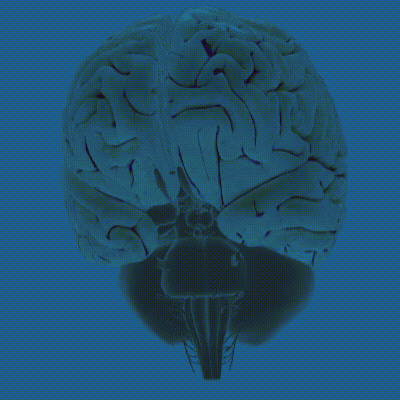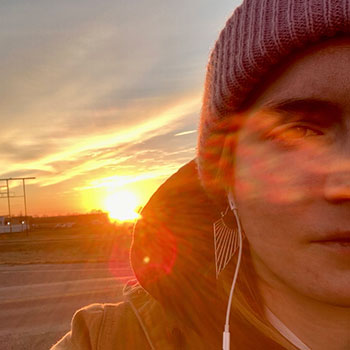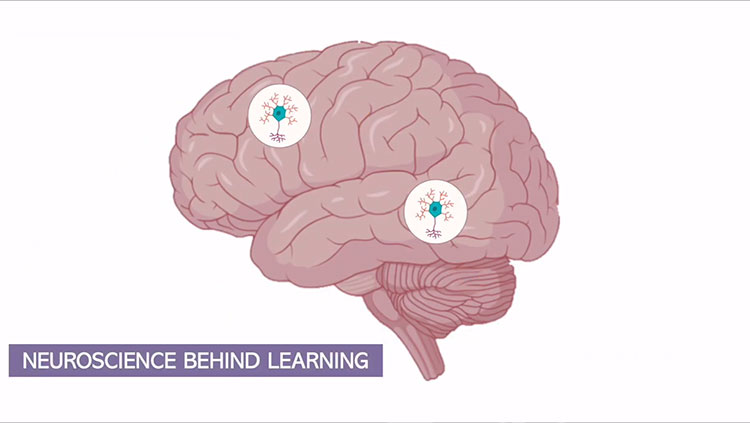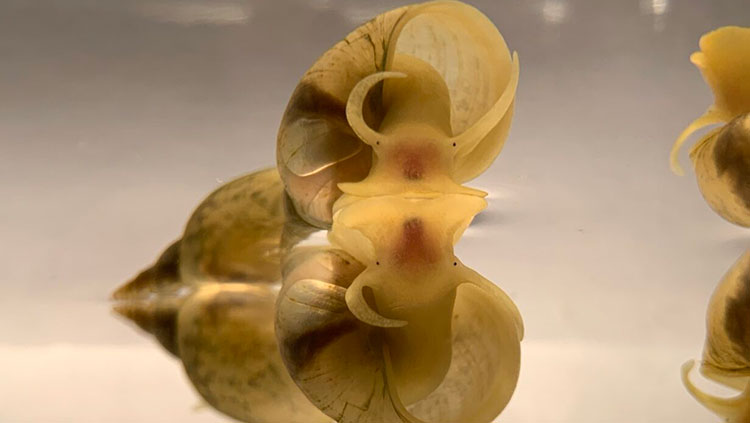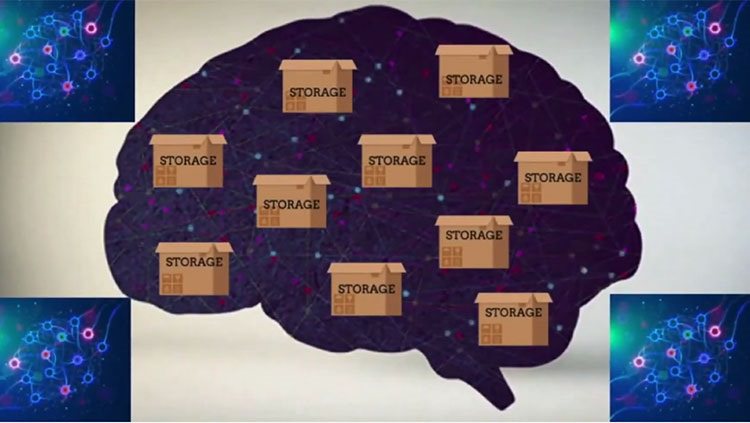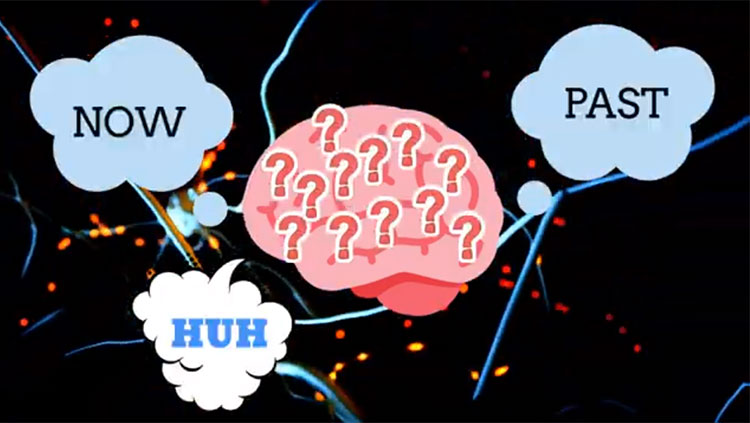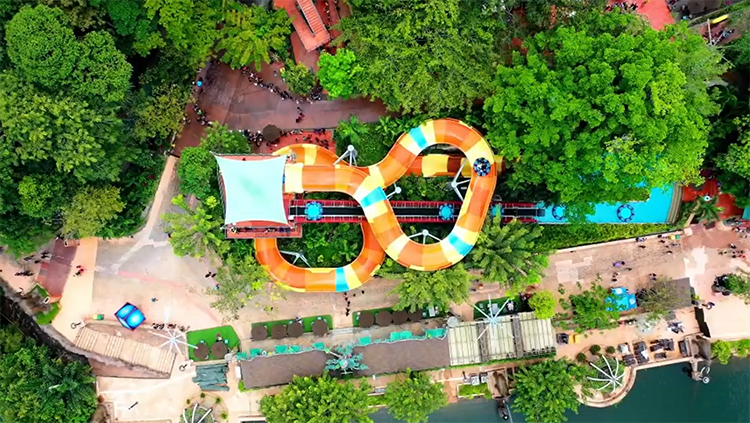What Scientists Learned Amid the Fluctuating Fad in Mirror Neurons Research
- Published26 Sep 2022
- Author Emily Shepherd
- Source BrainFacts/SfN
Nearly 15 years ago, headlines heralded the discovery of "Cells That Read Minds." The news announced the existence of brain cells whose specific job allows primates to copy and predict behavior. These cells, called mirror neurons, appeared in hundreds of scientific studies year after year, as well as in numerous magazine articles, news broadcasts, books, and TED Talks.
Though the buzz around mirror neurons would fade as the initial hype and promise failed to deliver, their story is not over. Mirror neurons might yet reveal insights into how social learning shapes the brain, and to what degree.
In the late 1980s, Giacomo Rizzolatti and his team at the University of Parma were recording the activity of individual cells in the premotor cortex of macaque monkeys — an area of the brain known to activate while a monkey grasped objects. The scientists wanted to distinguish between neurons that fired while the monkey simply viewed an object from those that fired while the monkey moved to grasp it.
During the experiment, however, something strange happened. When the monkeys observed a scientist grasping an object to reset the experiment, some neurons that originally fired during the monkey’s grasp fired again. These neurons were firing no matter whether it was the monkey or the scientist doing the grasping.
This duplicate firing was, and remains, the defining quality of mirror neurons. “Mirror neurons are cells in the brain that have a really interesting property,” says Cecilia Heyes, Senior Research Fellow in Theoretical Life Sciences at All Souls College at Oxford University, “… they fire when an action is performed by the individual owner of the brain and when an action like that is observed [and] performed by somebody else.” They would later be found in the inferior parietal lobules of monkey and human brains, as well as other areas of the motor cortex in humans.
Claims to Fame
“Finding that motor areas are involved in what was previously thought to be a purely perceptual process was a big deal,” says cognitive neuroscientist Caroline Catmur at King’s College London. “Then different researchers and theoreticians started to wonder, we've got these cells, what are they doing?”
In 1998, Vittorio Gallese (one of the scientists on Rizzolatti’s original team) and philosopher Alvin Goldman supported one theory for their function: the simulation theory. They posited mirror neurons may be the source of the human ability to mentalize. Mentalizing is the process by which people make inferences about the mental states of others, including knowledge, feelings, beliefs, intentions, and desires. By firing identically no matter whether an action was being executed or visually perceived, they seemed to create a simulation of the action in the brain. This simulation, the theory went, reminded the brain of its own intentions behind an action, and therefore the brain could infer the intentions of another person.
“Here was something that showed a path to how all these things may have started out with mirror neurons,” said University of California neuroscientist Gregory Hickok, “and then blossomed into everything wonderful and amazing about humans.”
Many scientists believe, then as now, that mentalizing confers an evolutionary advantage to those who do it well, and that humans are the best at mentalizing among the primates. Since prehistoric competition favored humans who made more and better inferences about the internal states of others, mentalization could help explain how humans built civilizations.
This theory had implications for other areas of psychology and neuroscience, including studies of empathy, emotion recognition, autism, and language. “Here was something that showed a path to how all these things may have started out with mirror neurons,” said University of California neuroscientist Gregory Hickok, “and then blossomed into everything wonderful and amazing about humans.” The number of scientific papers on mirror neurons accelerated, peaking in 2013, when over 300 papers were published that year alone.
The Fallout
However, even at the time, not everyone bought the hype. One group of scientists in 2008 called mirror neuron research fraught with “circular reasoning.” Researchers had not yet characterized human mirror neuron physiology or confirmed whether mirror neurons existed in humans. Many researchers assumed human mirror neurons were contained in analogous brain areas mapped to the monkey brain. With this assumption, many deduced they were witnessing human mirror neurons firing in brain areas analogous to where monkey mirror neurons were found — without differentiating what a human mirror neuron was or distinguishing signals from neighboring visual, motor, and visuomotor neurons.
In 2010, Heyes offered a competing theory of mirror neuron origin and function based on associative learning: a form of learning in animals resulting from exposure to a relationship between two events. This theory suggested that the mirror neuron system was a product — and a process — of social interaction.
Crucial to this theory was Catmur’s 2007 research publication showing mirror neurons could be trained, in just an hour, to fire for different cues than they originally fired. People in this study watched a human hand moving its index finger but were instructed to move their little finger in response. This training caused mirror neurons to switch: Those originally firing for observations of index fingers subsequently only fired for observations of little fingers.
“There was a period where people were saying, ‘There’s no such thing as mirror neurons.’”
By 2014, the mentalizing theory began to unravel in earnest. First, Hickok published a book entitled “The Myth of Mirror Neurons,” detailing logical fallacies and contradictory data among hundreds of scientific papers.
That same year, Heyes, Catmur, and colleagues synthesized all the research supporting Heyes’ associative learning theory. They maintained mirror neurons were not an evolutionary adaptation causing humans to develop exceptional mentalizing powers. Rather, mirror neurons were formed in the brain after birth, in response to repeated instances of doing and seeing the same action simultaneously, as happens during synchronized dancing or being imitated by a parent. “This implies that it's very easy to make mirror neurons, and it's very easy to stop mirror neurons from functioning like mirror neurons,” said Heyes.
The perceived legitimacy of mirror neuron science plummeted from 2014 onward. “There was a definite backlash, there was no way you could get money to do research on any of this,” said Catmur. “There was a period where people were saying, ‘There’s no such thing as mirror neurons.’” The quantity of papers published on mirror neurons suddenly fell as sharply as it had risen, and popular media on the subject plummeted.
As the Dust Settles
Despite the backlash, Heyes and Catmur continue research on mirror neurons. In 2021, they published a paper together arguing despite many initial ideas about the function of mirror neurons proving false, the cells are still fascinating and worthy of empirical research.
Scientists now strongly suspect the role mirror neurons play. They contribute to imitating another’s body movements. They help distinguish basic gestures, like a wave versus a point. And yes, they can be useful early in the process of mentalizing. But the brain can mentalize without them.
To what end the brain builds mirror neurons is still an open question. If Heyes and Catmur are right, it may turn out that other functions of the brain are created in similar ways. “If something like mirror neurons, a phenomenon that many people found so striking, can be produced by learning in social interaction,” said Heyes, “then maybe lots of other features of our minds are learned in the same way.” Though the fame of the cells has already soared and crashed, it may be that mirror neurons are holding important insights yet to be revealed.
CONTENT PROVIDED BY
BrainFacts/SfN
References
Blakesee, S. (2006, January 10). Cells That Read Minds. The New York Times. Retrieved Mar 7, 2022. https://www.nytimes.com/2006/01/10/science/cells-that-read-minds.html#:~:text=Mirror%20neurons%20seem%20to%20analyzed,mirror%20neurons%20tell%20you%20so.
Bohlin, H. (2013). “Simulation Theory.” Encyclopedia of Sciences and Religions. 1: 2146–2153. https://link.springer.com/referenceworkentry/10.1007/978-1-4020-8265-8_906
Catmur, Caroline, Rogier B. Mars, Matthew F. Rushworth, and Cecilia Heyes. (September 1, 2011). “Making Mirrors: Premotor Cortex Stimulation Enhances Mirror and Counter-Mirror Motor Facilitation.” Journal of Cognitive Neuroscience 23, no. 9: 2352–62. https://doi.org/10.1162/jocn.2010.21590.
Colapinto, J. (2009, May 4). Brain Games: The Marco Polo of Neuroscience. The New Yorker. Retrieved Mar 7, 2022. https://www.newyorker.com/magazine/2009/05/11/brain-games
Cook, Richard, Geoffrey Bird, Caroline Catmur, Clare Press, and Cecilia Heyes. (April 2014). “Mirror Neurons: From Origin to Function.” Behavioral and Brain Sciences 37, no. 2: 177–92. https://doi.org/10.1017/S0140525X13000903.
Dinstein, Ilan, Cibu Thomas, Marlene Behrmann and David J. Heeger. “A mirror up to nature.” Current Biology 18 (2008): R13-R18. https://www.cell.com/current-biology/fulltext/S0960-9822(07)02201-4
Gallese, Vittorio, and Alvin Goldman. “Mirror Neurons and the Simulation Theory of Mind-Reading.” Trends in Cognitive Sciences 2, no. 12 (1998): 9. https://www.cell.com/trends/cognitive-sciences/fulltext/S1364-6613(98)01262-5
Hare, Brian, and Vanessa Woods. Survival of the Friendliest. New York: Random House, 2021.
Heyes, Cecilia. “Where Do Mirror Neurons Come From?” Neuroscience & Biobehavioral Reviews 34, no. 4 (March 2010): 575–83.https://doi.org/10.1016/j.neubiorev.2009.11.007.
Heyes, C., & Catmur, C. (2021). What Happened to Mirror Neurons? Perspectives on Psychological Science, 17, 153-168. https://doi.org/10.1177/1745691621990638
Hickok, Gregory. (2014). The Myth of Mirror Neurons. New York: Norton.
Krupenye, Christopher. “The Evolution of Mentalizing in Humans and Other Primates.” In The Neural Basis of Mentalizing, edited by Michael Gilead and Kevin N. Ochsner, 107–29. Cham: Springer International Publishing, 2021. https://doi.org/10.1007/978-3-030-51890-5_6.
Mentalization. (n.d.) APA Dictionary of Psychology. American Psychological Association. Accessed June 1, 2022. https://dictionary.apa.org/mentalization
Ward, Jamie. (2012). The Students Guide to Social Neuroscience. New York: Psychology Press.


